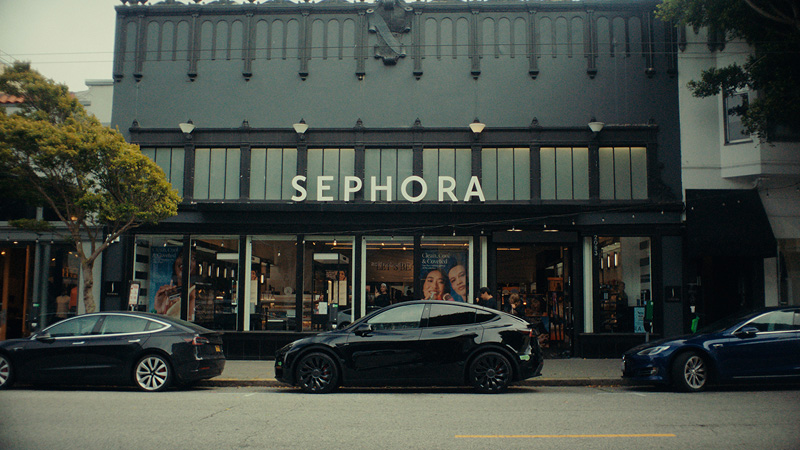From startups to legacy brands, you're making your mark. We're here to help.
-
Innovation Economy
Fueling the success of early-stage startups, venture-backed and high-growth companies.
-
Midsize Businesses
Keep your company growing with custom banking solutions for middle market businesses and specialized industries.
-
Large Corporations
Innovative banking solutions tailored to corporations and specialized industries.
-
Commercial Real Estate
Capitalize on opportunities and prepare for challenges throughout the real estate cycle.
-
Community Impact Banking
When our communities succeed, we all succeed. Local businesses, organizations and community institutions need capital, expertise and connections to thrive.
-
International Banking
Power your business' global growth and operations at every stage.
Key Links
Prepare for future growth with customized loan services, succession planning and capital for business equipment.
-
Asset Based Lending
Enhance your liquidity and gain the flexibility to capitalize on growth opportunities.
-
Equipment Financing
Maximize working capital with flexible equipment and technology financing.
-
Trade & Working Capital
Experience our market-leading supply chain finance solutions that help buyers and suppliers meet their working capital, risk mitigation and cash flow objectives.
-
Syndicated Financing
Leverage customized loan syndication services from a dedicated resource.
-
Commercial Real Estate
Capitalize on opportunities and prepare for challenges throughout the real estate cycle.
-
Employee Stock Ownership Plans
Plan for your business’s future—and your employees’ futures too—with objective advice and financing.
Key Links
Serving the world's largest corporate clients and institutional investors, we support the entire investment cycle with market-leading research, analytics, execution and investor services.
-
Institutional Investors
Putting your long-tenured investment teams on the line to earn the trust of institutional investors.
-
Markets
Direct access to market leading liquidity harnessed through world-class research, tools, data and analytics.
-
Prime Services
Helping hedge funds, asset managers and institutional investors meet the demands of a rapidly evolving market.
-
Global Research
Leveraging cutting-edge technology and innovative tools to bring clients industry-leading analysis and investment advice.
-
Securities Services Solutions
Helping institutional investors, traditional and alternative asset and fund managers, broker dealers and equity issuers meet the demands of changing markets.
Key Links
Providing investment banking solutions, including mergers and acquisitions, capital raising and risk management, for a broad range of corporations, institutions and governments.
-
Center for Carbon Transition
J.P. Morgan’s center of excellence that provides clients the data and firmwide expertise needed to navigate the challenges of transitioning to a low-carbon future.
-
Corporate Finance Advisory
Corporate Finance Advisory (“CFA”) is a global, multi-disciplinary solutions team specializing in structured M&A and capital markets. Learn more.
-
Development Finance Institution
Financing opportunities with anticipated development impact in emerging economies.
-
Sustainable Solutions
Offering ESG-related advisory and coordinating the firm's EMEA coverage of clients in emerging green economy sectors.
-
Mergers and Acquisitions
Bespoke M&A solutions on a global scale.
-
Capital Markets
Holistic coverage across capital markets.
Your partner for commerce, receivables, cross-currency, working capital, blockchain, liquidity and more.
Key Links
A uniquely elevated private banking experience shaped around you.
-
Banking
We have extensive personal and business banking resources that are fine-tuned to your specific needs.
-
Investing
We deliver tailored investing guidance and access to unique investment opportunities from world-class specialists.
-
Lending
We take a strategic approach to lending, working with you to craft the right financing solutions matched to your goals.
-
Planning
No matter where you are in your life, or how complex your needs might be, we’re ready to provide a tailored approach to helping your reach your goals.
Whether you want to invest on your own or work with an advisor to design a personalized investment strategy, we have opportunities for every investor.
-
Invest on your own
Unlimited $0 commission-free online stock, ETF and options trades with access to powerful tools to research, trade and manage your investments.
-
Work with our advisors
When you work with our advisors, you'll get a personalized financial strategy and investment portfolio built around your unique goals-backed by our industry-leading expertise.
-
Expertise for Substantial Wealth
Our Wealth Advisors & Wealth Partners leverage their experience and robust firm resources to deliver highly-personalized, comprehensive solutions across Banking, Lending, Investing, and Wealth Planning.
For Companies and Institutions
-
Commercial Banking
From startups to legacy brands, you're making your mark. We're here to help.
-
Institutional Investing
Serving the world's largest corporate clients and institutional investors, we support the entire investment cycle with market-leading research, analytics, execution and investor services.
-
Payments
Your partner for commerce, receivables, cross-currency, working capital, blockchain, liquidity and more.
-
Credit & Financing
Prepare for future growth with customized loan services, succession planning and capital for business equipment.
-
Investment Banking
Providing investment banking solutions, including mergers and acquisitions, capital raising and risk management, for a broad range of corporations, institutions and governments.
For Individuals
-
Private Bank
A uniquely elevated private banking experience shaped around you.
-
Wealth Management
Whether you want to invest on you own or work with an advisor to design a personalized investment strategy, we have opportunities for every investor.
Explore a variety of insights.
Key Links
Insights by Topic
Explore a variety of insights organized by different topics.
Key Links
Insights by Type
Explore a variety of insights organized by different types of content and media.
Key Links
We aim to be the most respected financial services firm in the world, serving corporations and individuals in more than 100 countries.
Key Links
- Insights
- Payments
- Acquiring & E-commerce
- How payments drive customer loyalty amid a digitization push
Hosted By Laura Miller

Podcast with Laura Miller
KAREN: Hey Lara, thanks for joining me today. I'm excited to have our conversation as part of our digital transformation of Treasury's Series. This time on the strategic value of digital sales channels, which boy, have become even more strategic all of a sudden, kind of in the last six weeks or so here in the US. But certainly since the start of January, as the global pandemic has made its way around the world. So thank you so much for making the time.
LAURA: Absolutely. Thank you for having me.
KAREN: So let's start with perhaps the basics. We have all observed the evolution of business online. Certainly that has been an evolution we've observed happen with increasing acceleration over the decade of the 2010s, the one we close the book on, which seems like forever ago.
It was really only four months ago, but clearly, where we are, with economies in lockdown, digital has become the channel. Not just the preferred channel, but the central channel. Your perspective on the role of merchants globally, about prepping for this reality now? How prepared are they? What should they be doing if they aren't as prepared as they should have been?
LAURA: Well, Karen this is a great question. And absolutely so timely with what we're experiencing currently with COVID-19. And what we're seeing in the month of March alone is truly proof that really having scalable, flexible, and robust digital capabilities is critical for businesses today, particularly in the payment stage.
And even in normal times, right? The rise in omnichannel transactions is truly real. Giving companies and their customer choices about how and when, and where they want to buy things, pick things up and return, has really evolved to be extremely focused on the consumer, or customer's choice. And I've actually been pretty impressed to see businesses of all sizes quickly adapt in this short time, for those that weren't ready, or as ready as they could have been for digital, to be able to continue to keep their businesses alive.
Whether it's takeout, pickup, delivery, through the challenging times we're in now. And you've seen that in multiple industries, such as grocery, and restaurants, and even for online shopping that we might typically not shop online and have delivered. But that being said, there are a few things that digital can do for our customers, and their customers.
And a few things that they can do to prepare. And the first is this is really a defining moment for some of these businesses, to really solidify their brand loyalty with customers, really appreciate the extra lengths they're going to go to make it all work. And it has a couple benefits. One, it does increase the revenue source.
You can reach more customers, whether it's local, or global, or 24/7. And it also diversifies your revenue source. Diversifying that revenue source can be particularly important in times like this, and during typical ebbs and flows in the buying behavior of consumers.
And 3, it also really creates new and better opportunities for engagement loyalty. When you can have an omni channel experience, it really can keep clients engaged, repeat, and helped define loyalty and new avenues which obviously will drive revenue.
KAREN: It's interesting how I think even omnicommerce is taking on a different definition since we're not able to go inside of stores the way we once were. It has shifted that whole experience, certainly on the front end. But maybe not so much for consumers on the front end, but certainly on the fulfillment side, from the merchants' perspective. What are you seeing?
LAURA: So we are absolutely seeing that. And what is interesting that I've been having conversations with our clients, and our customers, around is this digital surge, and this omnichannel experience actually creates some new challenges and opportunities, right? That they need to think differently about.
And so one of those things is think about client communication, and test your engagement strategy. How are you connecting with those clients, where you may typically have relied solely on that person. What does end to end experience look like for them? And so then, that also leads into the client experience side.
So one, how are you going to communicate with them? Whether it's online, in-store, via phone, not present, email, all those different communication channels, website. To then what does your client experience when they come to describe your brand. Maybe they know your brand and they've bought from you before.
So what's that buying experience like? What's that research experience that's required? And then through that, what is the feedback? How well did the actual product get delivered? Did it meet their needs?
What's the feedback on it? Because often, that happens in real time when you're at present. And then last but not least, I would say the third piece to focus on is the controls. So when you're in an omnichannel, and now even more digital experience, it's different controls that you'll need to do to reduce fraud, minimize returns, and chargebacks.
And a lot of those depend on one, your communication, your engagement strategy, your customer strategy. And then how they experience your product or service, end to end.
KAREN: You know, what I found interesting, just personally, I think we all have our own personal anecdotes, is the degree to which brands are communicating and subtlety selling. Of course they want to sell, but they are sensitive to the fact that perhaps people are buying the same things that they once used to buy. Maybe people are uncomfortable spending money.
The messaging I think is really important to your brand loyalty point. But that also requires data, right? Access to data to better understand consumers, consumer engagement trends. Talk a little bit about the availability of data, and whether the enterprise merchants and small business merchants, both ends of the spectrum, are able to access and use data in the same way?
LAURA: Data, that's a very good question. Because Karen, data has been foundational for many client engagement strategies and loyalty strategies. And yes, I do think, obviously the more sophisticated you are, the more data and that analytics and gurus that you may be able to utilize.
But even with small business, there's many tools out there for them to realize, and to get tracking and trending to see how they're performing. And how they can use that data to identify repeat customers, and niche opportunities that they may not have seen before.
But also to your question, which is related to data and experience, but it's how do you use that is the talent in the organizations. Whether in your small business, or in your enterprise. So to your point, people might be not shopping as much, or not sure if that's what they're looking for.
Or not used to shopping in that experience for that have a product. And as you've noticed, a lot of the data and information that businesses can get can be used and what we call storytelling. Or how do you talk about your product in a different way? It's not just a functional.
But is it an emotion? Is it something that they feel as a part of what they need to do to fulfill their goals, or their needs, or whatever it might be? And so the talents that you will need to think about, who is managing the website. It's not just making sure my product is on there.
Do I have the price? Do I have the way that I can buy it, and then return it? But it's how do I use it? What is that storytelling experience? And if I have challenges, and what are other ways I can engage with people like me who are utilizing those products, and/or services?
And creating that engagement isn't just about the product anymore. Sometimes it's about the user community based around it. And so utilizing that information, but also the talented people supporting your digital platforms has to evolve.
KAREN: It's interesting, it brings contextual commerce to a different level. I received something the other day. I won't name the merchant. But it was about hosting a virtual dinner party. And this particular merchant wasn't selling food, but selling the other experiences.
You know, maybe you want to buy something to wear. Maybe you want to buy something to set your table. Here's a recipe for things you might want to make. And I thought that was just a very clever way of nudging consumers into making something that has been taken away from them.
The ability to go out to dinner with friends, into something contextual of course, and driving sales. That's of course why they're doing it. I thought that was very clever.
LAURA: It is. And you know what, Karen, we're actually seeing clients partner with each other. So where can clients of all sizes partner with each other? So that example, that dinner party experience, there is multiple products and services being sold with a collection of merchants that are partnering together, to create something unique and new. And so we're seeing that across different and unique categories where you might see a couple of clients partner, and create an experience that leverages both of the platforms.
KAREN: What does that mean for you as an enabler of these new innovative experiences for merchants of all sizes? What is required of your platform? What are the things that you are doubling down on as a result of what you see as an emerging area of need? Give us the most sense of that.
LAURA: Yes, absolutely. So we want to make sure that one, we are supporting the entire ecosystem as you said, from small business to some of the largest enterprise clients that we have. And in order to do that, we need to make sure that we have the platforms that are of course stable, consistent, reliable, secure, and also 24/7, right?
That can survive in multiple, whether it's a digital world or a physical point of sale world. And also transform across both. And so we have continued to invest in that. And our core platforms of course are critical. They get refreshed every month with new features to help businesses stay ahead. And we've also, if you think about the digital world, we've had to evolve what peak capacity looks like.
It's not just the typical holiday spending. It could be different hours or different days, just like what you spoke about. Whether it's a dinner party, or does that generate opportunity. And so the other piece for us is we are obviously investing in technology. But so are our clients.
So we're dealing much more frequently, day to day, with technologists and our clients. Whether it's someone from a small business just actually doing the programming and the website, to as you know, some of the most sophisticated.
And they have teams of technology working on their payments platform. So one of the things that we've done is really invested in how do we help technologists self-service though a Development Center. Because they want to be 24/7, and they also are being innovative, and want to be able to tackle things live. And so that's really important.
And we're still number one in e-commerce payments today on that platform. The second is we are investing in an entirely new platform called Helix. And I like to say this is born cloud-based, agile, with modern APIs, and purposely with the flexibility for what the future may hold. Because it's critical that we can move very nimbly in this environment, and connect very easily with even businesses today that are born this way.
That are born mobile, that are born digital. And that leads us to the third piece, is that we're investing in how do we think about mobile, whether it's a physical phone or iPad first. And how are-- and how do we make sure we deliver and create technology that enables our clients to think that way as well.
And then the other thing, last thing I would say, is we've really evolved in the sense of our people. And so how do we, as consultants, and payments, who deal with a breadth of companies across multiple industries, bring the best practices for all the things I even talked about. Whether it's how you can engage with customers, do fraud controls, end to end.
And bring those to life, it's beyond payments for us. We really become, whether it's a quick, I would say, piece of advice to even [? recording ?] sessions to help our client's map out what that whole end experience can be.
KAREN: Right. Yeah, I can imagine that everyone was ready for the shift to digital. But it happened for everyone all at once. Kind of everybody at the same time, does put a lot of strain on businesses themselves and the systems to support them as you talked about. And the key capacity has been completely redefined.
And by product categories, as people are rushing online to buy groceries, which is something that was relatively nascent until about six weeks ago here in the US. So the different demand consumption patterns I'm sure are fascinating for you to monitor and watch.
What are you hearing from your merchants, with respect to the permanency of these digital shifts? Do they expect that this becomes the way consumers are engaging in this digital-led experience with them, whether the fulfillment happens online or somewhere else?
LAURA: Well I do think digital is, as we know, it's not overnight going to prove to be the only way people pay. So I do think there's going to be an evolutionary thing. I think some of it is dependent upon the individual's comfortability and confidence. And I do think COVID-19, where people were forced to go to that model if they wanted to have goods, that I think that will build that confidence.
And I think over time, when people see that confidence, have that competence and see the benefits of it, it will become core to what they do. And one of the things we are hearing and seeing, however, is the sensitivity around making sure that they can have safe payments, but also in a way where they don't have to touch the keys, or sign the POS.
So right? So one of the things that the technology that does exist out there is, if you think about or like for example with Chase, the debit cards. We have the tap capabilities, right? Not only does it have security and convenience, but it's also safe, right?
It's your card, you're holding your card, and it goes in your wallet. And so when we look at even our partnership with the New York MTA, that debuted less than a year ago, the contacts ability to tap. So I think some of this now will become more on the forefront, and contactless isn't so scary anymore, right?
In fact, I think both merchants and consumers are much more open to it, have a little more confidence in it, and we'll be open to experimenting with it, because of, I think, the safety concerns that it also brings. So I do think the long-term impacts of today's crisis is will impact payments and digital. And I think it will help increase the confidence over time, and people's openness to try it.
KAREN: Because it puts the consumer in control, right? I mean, that's the beauty of what we're seeing evolve, whether it is a physical card that's contactless, or a digital method of payment via a wallet or card on file.
It does give the consumer the choice of how and where they want to transact. And creating those seamless experiences across those channels isn't easy. I mean, I know it's what you guys invest a lot of time and a boatload of money in making sure happens. But that has to be something that you think about a lot more today than perhaps you thought about, even a couple of months ago.
LAURA: Yes. And it's something that we will continue to talk with our merchants of all sizes, and help prepare them as they think about-- anytime we are with the merchant, where it's not just about the payment itself. It's how to we make sure that they're maximizing their client experience with their customers? And so we'll continue to bring the type of technology and best practice sharing that we can, so that they can really compete with confidence, and support their customers with confidence.
KAREN: You touched on fraud and chargebacks earlier in the conversation. Help us understand a little bit more about the capabilities you extend to merchants to help them manage that. I mean, I can imagine that fraud, which is always present given the migration to online so quickly. That's a worry. I mean, chargebacks, refunds, there's just a lot going on today in that space.
LAURA: There's a few things going on. And I take a deep breath because you have what I would call the real potential chargebacks, right? The real pieces that can happen. And then there's also what might people might call friendly fraud, or buyer's remorse, right? And there's those two levels.
And I think there's a few things. Number one, we always have tools that they can utilize online to help manage chargebacks day to day. Because generally in a normal world, you have a regular chargebacks. And based on the business that you have, there's different percentages that are typical.
We help clients and customers work through that, right? That's going to be you. In the world today, particularly in certain industries that have been hit hard, right? Travel, entertainment, events, there is a couple of things happening.
One, there is the event, or the flight, or the actual product version isn't going to happen. Or it might be delayed. Or they've lost confidence of being able to be around that. And so what we talk with our customers, and our merchants about most is first you want to make sure that you have a really good customer experience in the sense that you're very, very clear on what the return, what the exchange, what those policies and procedures are.
And how, if you do need to do a return, if you do need to do a chargeback, want the best process is to work with the merchant. The best case for them is to work with the merchants at all times. It develops the relationship. It solidifies the loyalty and the customer experience, right?
Anytime something goes to a chargeback, that's almost sometimes skipping the merchant, or some sort of dissatisfaction or lack of confidence. Because once the chargeback is in the system, it has to go through, right? And the processes work, and it creates more work all around.
Whether it's even more valid or not. And so one is to really make sure that you keep those relationships, and make very, very clear what those clients, and how they can manage that. And then two, we do have online and available always best practices, on how to minimize chargebacks.
Whether it's experience in the store, or what's on your terms and conditions, how you disclose. And then your return, or your exchange, or your conversations when someone wants to cancel. And so again, there is no silver bullet.
But I think as much of it as you can upfront is the right way for our clients and customers to handle. Now in times like today, and the challenges we have, we work one to one with these clients to help them to diagnose where the biggest backlogs are, where they might be able to help.
Even down to their website, and things that they could offer in best practices. And so we spent much time hands on with all of them, to support them end to end through this.
KAREN: Lara, what's the one question that you consistently get from merchants of all sizes? I mean, as we wrap this conversation, I'm just curious. Is there the one question that's on everyone's mind? And if so, how are you answering it?
LAURA: So I'll give you two, because I do think that there's two things. One is how do I grow revenue? What am I doing? What are the ways I can grow revenue? And two is how do I make, minimize the friction with my clients, and maximize the customer experience.
And so both of those are critically important, and actually they're interrelated, right? And so from a revenue perspective, that's why this conversation's perfect, is we really look and see how many channels, and how many ways can you connect with your clients, and give them opportunities?
Whether it's the way they can pay, the methods of payment they may have. And all of the access that makes it easy for them to either get online, in store delivery, all the things we've just talked about digital.
Having that true omnichannel experience, and creating this, what I would call this 24/7 ability to support multiple clients, in multiple types of locations. And cultures, and uses of the product or service. And then secondly, on the front of minimizing friction, it's how do you utilize all the tools that are available to you?
Whether you have broad tools. Or you have account updater tools, or things that enable you to maximize the ability to process that payments while minimizing the fraud in instilling the confidence in the client, and you, that transaction will be a valid one all the way through. And the customer will continue to have loyalty in shop. So we really try to help think through how to minimize that friction during the payment process.
KAREN: Those two things are always important. Growing revenue, reducing friction. But I think it's particularly important now as more people who may be newer to the digital commerce experience flock online, establish accounts with their favorite brands, and prefer that as a way of doing business for their own reasons.
I think if it becomes a really important mandate, and it's good to know that that is on-- it's not only top of mind for merchants. It's top of mind for how you are helping them navigate those two really important issues and obstacles, potentially given the current circumstance. So Lara, thank you so much for your time today, and for your great insights throughout our conversation.
LAURA: Thank you, Karen. Bye-bye, now.
Highlights
- The COVID-19 pandemic demonstrates the strategic value of digital sales channels across consumer segments
- Brands with seamless online and mobile commerce are better equipped to mitigate the impacts of social distancing and the temporary store closures
- The pandemic has merchants of all sizes focusing on developing and optimizing digital strategies enabled by online, mobile and connected smart devices
- Even in-store payments are expected to transform as awareness and adoption of contactless card payments increases due to the pandemic
- Consistently great customer experiences require scalable, flexible and robust digital capabilities that support the entire customer journey
- Seamlessly embedding payments in digital sales channels can help brands create, grow and protect enduring customer loyalty
Contributors
Laura Miller
President, J.P. Morgan Merchant Services
Karen Webster
CEO of PYMNTS.com
Back to podcasts
Hide
Back to podcasts
Hide
This material was prepared exclusively for the benefit and internal use of the JPMorgan client to whom it is directly addressed (including such client’s subsidiaries, the “Company”) in order to assist the Company in evaluating a possible transaction(s) and does not carry any right of disclosure to any other party. In preparing this presentation, we have relied upon and assumed, without independent verification, the accuracy and completeness of all information available from public sources or which was provided to us by or on behalf of the Company or which was otherwise reviewed by us. This material is for discussion purposes only and is incomplete without reference to the other briefings provided by JPMorgan. Neither this material nor any of its contents may be disclosed or used for any other purpose without the prior written consent of JPMorgan.
J.P. Morgan, JPMorgan, JPMorgan Chase and Chase are marketing names for certain businesses of JPMorgan Chase & Co. and its subsidiaries worldwide (collectively, “JPMC”). Products or services may be marketed and/or provided by commercial banks such as JPMorgan Chase Bank, N.A., securities or other non-banking affiliates or other JPMC entities. JPMC contact persons may be employees or officers of any of the foregoing entities and the terms “J.P. Morgan”, “JPMorgan”, “JPMorgan Chase” and “Chase” if and as used herein include as applicable all such employees or officers and/or entities irrespective of marketing name(s) used. Nothing in this material is a solicitation by JPMC of any product or service which would be unlawful under applicable laws or regulations.
Investments or strategies discussed herein may not be suitable for all investors. Neither JPMorgan nor any of its directors, officers, employees or agents shall incur in any responsibility or liability whatsoever to the Company or any other party with respect to the contents of any matters referred herein, or discussed as a result of, this material. This material is not intended to provide, and should not be relied on for, accounting, legal or tax advice or investment recommendations. Please consult your own tax, legal, accounting or investment advisor concerning such matters.
Not all products and services are available in all geographic areas. Eligibility for particular products and services is subject to final determination by JPMC and or its affiliates/subsidiaries. This material does not constitute a commitment by any JPMC entity to extend or arrange credit or to provide any other products or services and JPMorgan reserves the right to withdraw at any time. All services are subject to applicable laws, regulations, and applicable approvals and notifications. The Company should examine the specific restrictions and limitations under the laws of its own jurisdiction that may be applicable to the Company due to its nature or to the products and services referred herein.
Notwithstanding anything to the contrary, the statements in this material are not intended to be legally binding. Any products, services, terms or other matters described herein (other than in respect of confidentiality) are subject to the terms of separate legally binding documentation and/or are subject to change without notice.
Changes to Interbank Offered Rates (IBORs) and other benchmark rates: Certain interest rate benchmarks are, or may in the future become, subject to ongoing international, national and other regulatory guidance, reform and proposals for reform. For more information, please consult: https://www.jpmorgan.com/global/disclosures/interbank_offered_rates
JPMorgan Chase Bank, N.A. Member FDIC.
JPMorgan Chase Bank, N.A., organized under the laws of U.S.A. with limited liability.
Related insights

Payments
How wire transfers work and when to use them
Apr 23, 2025
Discover how wire transfers can streamline your business transactions and enhance financial stability.

Payments
Flexible and future-proof: How MACH principles are shaping next-generation banking
Apr 17, 2025
J.P. Morgan Payments is ushering in a new era of technology in the financial industry, promoting guiding MACH principles that have the power to unleash transformative payment experiences for businesses and individuals.

Payments
Instant payments: Understanding real-time payment networks
Apr 16, 2025
Learn about real-time payments and how they can benefit your business

Payments
IVECO PAY: Adam Smith Award-winning solution
Apr 16, 2025
Learn how the multinational transport vehicle manufacturing company Iveco Group is transforming the customer journey with IVECO CAPITAL’s digital payment hub.

02:05 - Payments
Sephora delivers a best-in-class omnichannel experience with J.P. Morgan Payments
Learn how the beauty giant consolidated its payment-related processes to streamline the customer experience across channels.

Payments
What is accounts payable automation?
Apr 04, 2025
Optimize your payment processes and improve cash flow management through AP automation. Discover practical strategies for successful implementation.

Payments
Mar 25, 2025
Protect your business and customer relationships through strong payment security. Learn how PCI DSS requirements safeguard card data and help prevent fraud while building trust.
You're now leaving J.P. Morgan
J.P. Morgan’s website and/or mobile terms, privacy and security policies don’t apply to the site or app you're about to visit. Please review its terms, privacy and security policies to see how they apply to you. J.P. Morgan isn’t responsible for (and doesn’t provide) any products, services or content at this third-party site or app, except for products and services that explicitly carry the J.P. Morgan name.
